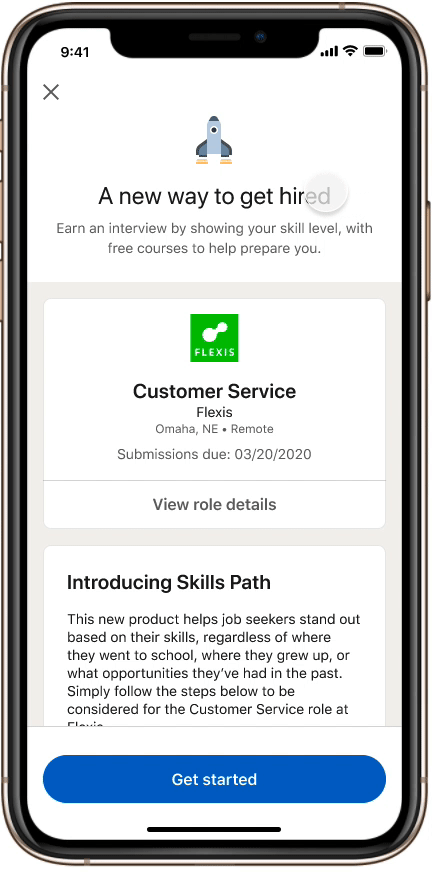SOCIAL
LinkedIn Adds New ‘Skills Path’ Process to Facilitate Opportunities in Recruitment

LinkedIn’s looking to facilitate more opportunity for open positions with a new process called ‘Skills Path‘, which essentially enables employers to add additional tests to help more candidates display their suitability for a given role.

The idea, LinkedIn says, came about at the height of the COVID-19 crisis last year, which saw many people being laid off or furloughed, while other industries actively sought new staff to keep up with demand. Yet, these two cohorts often failed to connect.
As explained by LinkedIn:
“We could see there were opportunities available, but the motivated and talented workers that had lost their jobs weren’t finding them. Workers don’t often realize that the skills they have for one job can be easily transitioned to another job. But the fact is, even if they do realize that, they can’t get hired until employers realize that too. The truth is, how we hire can be limiting. Many recruiting processes depend on relevant experience or degrees to find candidates, but sometimes the person that’s the best fit for the role is from a community an employer has never considered before.”
So while people may be perfectly suited for another role, the barrier for entry often seems too high, because they don’t have the requisite experience in that specific position or sector. Which is where Skills Path comes in.
“Skills Path brings together LinkedIn Learning courses with Skill Assessments to help recruiters evaluate candidates in a more equitable way – based on their proven skills. Hiring practices have long depended on traditional candidate qualifications like degrees, title, and their network to discover candidates. With Skills Path, that changes.”
The process enables employers to include relevant LinkedIn Learning courses on their job ads, or skill assessments, which can both assist in determining better candidates, based on their actual abilities, while also helping candidates apply for more positions.

As LinkedIn notes, that opens up more opportunity for people of varying backgrounds, who may not have the skills, on paper, that they might need. By being able to demonstrate such in another way, that could provide more potential, and help boost the pool of good quality candidates.
LinkedIn says that it’s already seen success with the process internally:
“We created our first iteration of Skills Path for our customer service teams. We removed traditional requirements such as degree or 1-2 years prior experience in our job descriptions, and evaluated people based on their proven skills needed for the job by incorporating a validated skill assessment into the application process. Not only were we able to broaden our talent pool to hire talent from companies we typically don’t hire from – ranging from grocers to big-box retailers – we improved our hiring efficiency.”
It’s an interesting evolution of the hiring process, utilizing the benefits of modern connectivity to add a more interactive, responsive element, which could have significant flow-on benefits. Really, given the connectivity and flexibility of digital tools, we don’t need to be constrained to what’s written down anymore, as we can also demonstrate and test for skills.
And if it works out, it could change the way recruitment is carried out across the board.
LinkedIn says that it’s also been testing the process with a range of partner businesses, including Citrix, Gap, Ralph Lauren and Wayfair, among others.
It’s an interesting project, if nothing else, and it aligns with LinkedIn’s broader goal to better facilitate economic opportunity, where possible.
And as LinkedIn continues to advance its recruitment tools, it also better positions itself as the key platform for HR professionals.
You can learn more about Skills Path here.
